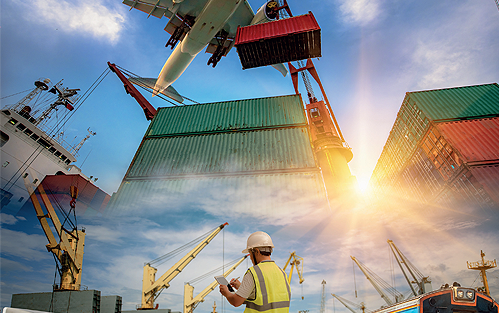
Supply chains, redefined
Achieving optimum levels of efficiency within supply chains is a common objective for organizations across the globe. Increasingly, companies are re-examining the trade-offs between efficiency and risk, resilience and agility.
Many efficiency targets are siloed metrics and this, combined with continued global disruption, raises the question of whether the incessant pursuit of efficiency has led to less resilient networks. A lack of resilience increases risk and, ultimately, supply chains are like stock markets – they hate risk and uncertainty. This is largely because risk needs to be offset with expensive insurance, such as increased inventory or capacity. In a high risk world, supply chains cannot simply rely on inventory and capacity as insurance though, because it is simply too expensive. Instead, they need long-term agility and resilience.
Mitigating the impact of political turmoil
Right now, many businesses are reviewing their supply chains and considering factors such as operational strategy, resilience, agility or perhaps even the possibility of onshoring. This is partly due to the ongoing pandemic disruption. But they’re also looking to hedge their bets against inevitable future turmoil, which we know is on the horizon, but is difficult (or impossible) to predict the
impact of.
For the UK, Brexit and the end of the transition period is looming, with fresh concerns recently raised about whether customs systems at ports will be ready and able to deal with trade in 2021. Elsewhere in the world, there is conflict in central  Asia, protests in Thailand and Nigeria, US-China trade wars, the US election – the list goes on.
Asia, protests in Thailand and Nigeria, US-China trade wars, the US election – the list goes on.
How then, should businesses be calibrating their networks to combat these issues?
Decision-making in the supply chain
It’s worth remembering that supply chain transformation is normally slow to achieve. We have seen instances where supply chains reconfigure quickly, for example when embracing offshoring to chase a cost advantage. But supply chain processes and systems cannot always be overhauled as quickly. This leaves us managing more complex networks without the right tools for the job at hand and many networks are now counting the cost.
Holistic strategic change encompassing networks, people, processes and systems takes time.
Cost was once the major driver in offshoring. It led to a rapid refocusing of manufacturing and sourcing, and therefore supply chains, to China and other parts of Asia. However, the world is becoming more expensive, as well as more conscious of environmental and ethical considerations one one hand, while robotics are reducing the labour cost differential of near-shoring on the other. Meanwhile, the risk of long lead times and sustainability issues are receiving increased focus.
While these have always been considerations for supply chains, changing market considerations and consumer behaviours has rebalanced their order of priority. As a result, as well as cost, it is now even more so about risk and sustainability, which in particular is increasingly influencing buyers, who are in turn scrutinising all aspects of a business.
Combining short- and long-term thinking
So, with supply chains that can be slow to change and evolve on one side, and continued uncertainty on the other, where do businesses turn? They need a combination of short-term agility and long-term resilience.
First, the short-term. This is where speed is needed – a sudden change in policy tomorrow, or a new administration following elections, could completely alter the process for importing or exporting goods with a key UK trade ally within a matter of days. That’s where being able to scale up or redeploy to different locations, and tap into new logistics routes rapidly, are required. This is where end-to-end scenario planning, rapid decision making, and orchestration across the entire supply chain network are essential. Without this, responding to these unexpected, immediate market changes is next to impossible.
In the long-term, the focus is on how well the supply chain is structured to cope with disruption. So it’s about resilience, it’s about investing in the right locations, and it’s about being able to accurately forecast and prepare for different potential future scenarios, whether it’s a long-term lockdown, rising costs or the ongoing drive to cut carbon emissions.
The common theme is having the ability to plan effectively. Both these short- and long-term strategies work hand-in-hand. By building resilience into the supply chain in the long-term, businesses will have a much better chance at responding with speed and agility to short-term, unexpected disruption. Ultimately, it all comes from being able to capture and analyse data properly across all parts of the supply chain, and from both internal and external sources, in real-time. This in turn informs how different events are modelled and scenarios are tested, and then that is all taken and used to design networks that can manage disruption.
Redefining supply chains for a disrupted future
We’re going to see more political disruption. When coupled with natural and health disasters, it is clear that supply chains need to be primed to cope effectively. That means combining both short-term reflexes with strategic decision-making, all informed by the same accurate, trusted data-driven planning and forecasting.
Antony Lovell is VP Applications at Vuealta. Vuealta is a Global Anaplan Partner helping organizations around the world solve their biggest planning challenges with applications powered by the Anaplan Connected Planning Platform.
https://www.vuealta.com